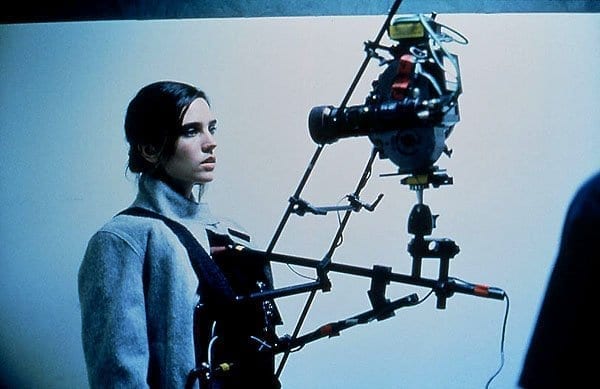Point of view might be the most underlooked aspect of film financing.

Consider the points of view of potential film investors.
Before even thinking about your project, consider the points of view of your potential film investors, whether they’re the gatekeepers of film grants, screenwriting contests, or even the friendly judges here at The Film Fund.
Film financiers want something incredibly creative that’s going to resonate with an audience. They need something that pushes the boundaries of visual storytelling–especially when it comes to short film funding.
Producers translate creative ideas into line items. The secret to raising money and securing development funds for an independent film is to get your financiers excited to add these line items in order to produce a unique story. That’s why the funding portion of our sentence entry contests is so important. Tell our judges why you need the funding to achieve your unique vision. Consider our point of view.
Watch the trailer for TUB below, a short film written and directed by Bobby Miller. This creative premise allowed Miller to screen at Sundance, and it served as the inspiration for his feature film starring Johnny Galecki and Anjelica Huston.
For shorts, film investors want something incredibly creative. While this film required practical effects that probably increased its budget, the benefits of the creative premise outweighed the costs. This represents the point of view of short film investors. The bottom line needs to be worth it–enough for the film to make a mark.
Successful short film financiers don’t want to follow trends.

While this may seem obvious now that it’s written out, a lot of filmmakers try to adhere to what they think is trending and what audiences want to see. That strategy may work for big-budget tentpole studio productions, but a good short represents an experimental playground. Something safe likely won’t get funded, and if it does get funded, it won’t do too much for your career.
This doesn’t mean you have to make something incredibly edgy or dark, either. Experiment with high speed cameras, tell a story solely with light, create a dystopian world where everyone is left-handed–and tell it from the government’s point of view. Try to make something so unique that it couldn’t even be listed as an example here. If you make something according to trends instead of using unique point of view, your project might get lost in the shuffle.
It can affect the setting of your screenplay.

Now that we’ve considered the point of view of your potential film investors, let’s see how it relates to screenwriting itself. The best screenwriting books and the most famous screenwriters will, without a doubt, state that the point of view of your characters is one of the most important things in your story–more important than screenwriting format.
But what most screenwriting tips won’t tell you is that point of view has the power to alter every setting in your script. If a character sees an event unfold in a different way, or they take a different point of view, or if the audience knows what’s going to happen before the characters themselves do: all of these things can change the setting of the next scene.
Let’s say we’re trying to secure documentary funding. And since I’ve recently watched it, let’s use The Bill Murray Stories as an example. In this story, the filmmaker, Tommy Avallone, chooses to tell the story through the points of view of those affected by Murray’s legendary stories. Avallone travels across the country to interview them, adding to the travel line item on his film budget.
But again, taking this point of view allowed him to attract attention to the project much more easily. Let’s say the project took the point of view of Bill Murray reacting to his stories. Not only does this lessen the story’s mystique, but how the hell would he get ahold of Bill Murray? Not to mention the astronomical cost of booking Bill Murray for a feature-length film. It would be a producing nightmare. Budget, logistics, everything.
The unique point of view made the film happen.
Changes in point of view will require additional equipment and services.
Remember, filmmaking is about telling visual stories. Prose writers can talk about different techniques regarding point of view all day, but once the script is finalized, it’s up to the director, cinematographer, and sound designer to translate that written point of view to the screen. There are some great resources out there like Reddit Screenwriting, but just remember that you’re writing so that your story eventually leaves the page.
If you’re the one who’s going to be directing the short, think about your shots as you’re writing. Craft not only the point of view of your characters, but mentally create the point of view for your audience as well. On screen, a scene could be interpreted in entirely different ways depending on the angles chosen.
And if you do decide to implement extremely unique points of view, such as the Snorricam shot in Requiem for a Dream, just remember that you might need more funding to pull it off! Crane shots, tracking shots, whip pans–these camera techniques all require high-end equipment. Gimbals, high-end fluid tripod heads, steadicams, snorricams. According to this Reddit thread, the custom rig used in Aronofsky’s scene above cost $650 for the day.

Remember to get creative, though, and fake it ’till you make it. On my last corporate shoot, I faked a crane shot by putting our gimbal B-cam operator on the client’s factory scissor lift, and I told him to pan as the scissor lift rose into the air. Free crane, anyone?

And even if you do decide you’ll want to shell out extra cash for a certain piece of equipment, if it makes sense for the story, increasing your required budget–marginally–will add production value and storytelling nuance, showcasing your vision as a director. If a director pitches a project and is already envisioning certain shots necessary to pull off his or her story’s point of view, this instills confidence in whoever is funding the film.
Film is not just a visual content medium, either. Unique points of view can come from an auditory perspective as well, like in The Film Fund’s upcoming original production, “Coclaire” (working title). Without giving too much away, the film concerns hearing loss, and it’s requiring extensive sound design and original composing, as it’s told from the point of view of a man who struggles with his hearing. If it was told from someone’s point of view who could hear things fine, sound would not play a large role in the film, and the emphasis on producing original music and realistic soundscapes would not be as high of a priority.

All of these aspects of must be considered in pre-production through post-production, as they add to the budget and may require sacrificing some other elements in the film.
Even by just hearing a logline, these components of producing go through producers’ and financiers’ minds when considering funding a short film project. Producers translate creative ideas into line items. The secret to securing funding is to get your financiers excited to add line items to accomplish a unique story. That’s why the funding portion of our sentence entry contests is so important. Tell our judges why you need the funding to achieve your unique vision. Consider our point of view.